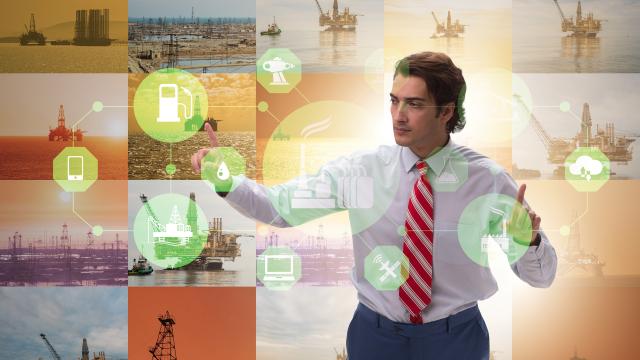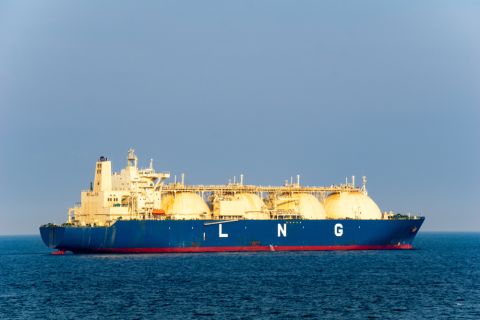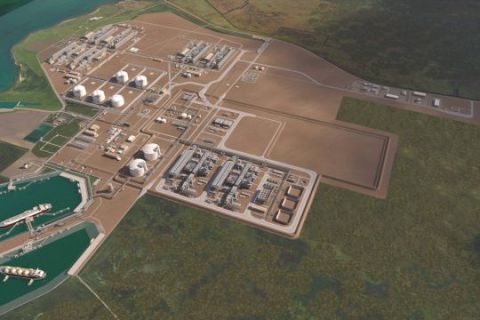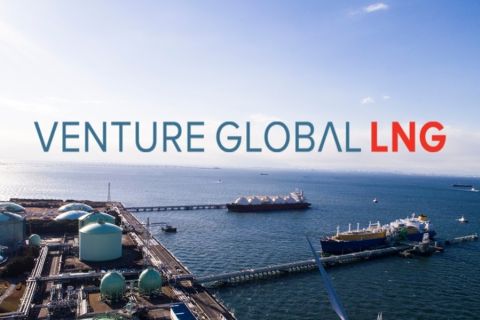
Like all oil and gas companies, Total is wrestling with a myriad of conflicting challenges. It needs to continue to explore for and produce oil and gas for the foreseeable future to keep revenue flowing, but all the while planning for the arrival of the low-carbon future, whenever that may eventually materialize. This conundrum is heightened by the continued low oil price that continues to put pressure on margins forcing operators to seek to improve operational efficiency and reduce costs. A vital tool in this drive continues to be digital technologies such as data analytics, artificial intelligence and immersive technologies.

“We know that the world will need energy, but what will be key is to find ways for technology to exploit oil and gas,” Francois Alabert, vice president technology solutions at Total, said in an interview with Hart Energy. “The sweet spot, I would say, is the area where we have the lowest impact and is cheapest, and which is the best balance in terms of energy use.”
When it comes to the application of digital technologies, Alabert said they offer a lot of potential, particularly in the geoscience arena. “There is a lot of geoscience that is going to emerge around carbon capture utilization and storage (CCUS),” he said. “That and the technologies that are being developed in reservoir engineering and seismic monitoring will be key in the future.”
Well integrity is another big area of interest for Total. Alabert explained that thousands of wells are being abandoned, and technology needs to be developed to ensure that those wells are stable over time to allow them to be abandoned safely.
Not So Slow
The sector is often accused of being too risk averse to new technologies and being too slow to embrace the advantages that digital operations can offer, but Alabert does not agree.
“The oil and gas industry has always been evolving very fast and proving concepts and being very clever,” he said. “I am talking about digital. We have internal discussions at Total, and sometimes I am told by our management that we should do more digital. My answer is that we have been doing digital for 40 years. When I started in geoscience, we were already working with some neural networks.”
Still An Attractive Industry
Another common misconception that Alabert has an issue with is the notion that the sector has difficulty appealing to the right sort of digital talent.
“We certainly do not have an attractivity problem,” he said. “A lot of young, talented people want to join Total. It is very attractive to them because we can be seen as part of the problem, but if you are part of the problem, then you are also part of the solution as well. It can be extremely motivating. In fact, I have a lot of young recruits who will be great explorers. They have a mindset towards how to make things more acceptable, cheaper and less carbon-intensive.”
Despite its current attractiveness, Alabert believes that the sector still needs to deliver a vision.
“At Total, we have an ambition that we have stated,” he said. “We are part of the problem and want to be part of the solution; to be a major player of sustainable energy. This is very attractive in itself, but now we must be logical and follow the vision in practice and be coherent, which is not always easy.”
According to Alabert, this vision is not storytelling in the sense of greenwashing but a way to show how an organization can be part of the solution by utilizing technology. Total is achieving this is through its R&D efforts, with 10% of its budget dedicated to CCUS. “Two years ago, this was not the case, but now it is a fact.”
Data, Data Everywhere
The popular saying around the oil and gas sector is that data is the new oil, but that is only true if real value can be extracted from it, and that is not always the case.
“It is important that we talk a lot about how to use the data,” Alabert said. “But there could also be the need for some new data, we need more sensors in the world, and maybe also nanotechnology can help here. Think about injecting nano traces into the flow and then getting the data from their journey.”
It is not just additional sensors that Alabert thinks can provide new data but outside sources as well.
“I am thinking about things such as satellite imagery,” he said. “There is a huge amount of satellite data that is being collected at a higher resolution than before with a broader spectrum, and this is going to be flooding the industry. That is going to be very helpful for the sustainability and acceptability baselines and surveillance of installations.”
But it is not all about collecting vast amounts of hitherto unavailable data but ensuring that the best use is made of data that is already being collected.
“I am not a specialist in geophysics, but it seems to me that we are not using all the information that is in the data that we collect now,” Alabert explained. “My geophysicists tell me that we are using only about 30 percent of what is in the data so we must extract that data and process it. Again, the rules of physics exist and can be improved, but we can get more out of the existing data through high power computing, along with integrating different types of data such as seismic and electromagnetic and convert this to a single view.”
People, Not Technology
But despite all the talk of what the digital transformation can do for the oil and gas industry, Alabert is keen to emphasize that it is not all about technology.
“The knowledge is in the people, it’s not perfectly shared, but the knowledge, the competencies, and new technology is not just new tools to help the people,” he said. “To help the brains work better, I always talk about augmented intelligence rather than artificial intelligence. I don’t like the word artificial intelligence; intelligence is human.”
Recommended Reading
Watson: Implications of LNG Pause
2024-03-07 - Critical questions remain for LNG on the heels of the Biden administration's pause on LNG export permits to non-Free Trade Agreement countries.
Despite LNG Permitting Risks, Cheniere Expansions Continue
2024-02-28 - U.S.-based Cheniere Energy expects the U.S. market, which exported 86 million tonnes per annum (mtpa) of LNG in 2023, will be the first to surpass the 200 mtpa mark—even taking into account a recent pause on approvals related to new U.S. LNG projects.
Belcher: Election Year LNG ‘Pause’ Will Have Huge Negative Impacts
2024-03-01 - The Biden administration’s decision to pause permitting of LNG projects has damaged the U.S.’ reputation in ways impossible to calculate.
US Asks Venture Global LNG to Justify Filing of Confidential Documents
2024-03-13 - The FERC request comes days after Venture Global LNG customers had challenged the company's request for a one-year extension of its startup and urged the regulator to make Venture Global release the confidential commissioning documents.
Venture Global Seeks FERC Actions on LNG Projects with Sense of Urgency
2024-02-21 - Venture Global files requests with the Federal Energy Regulatory Commission for Calcasieu Pass 1 and 2 before a potential vacancy on the commission brings approvals to a standstill.





